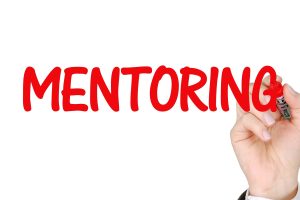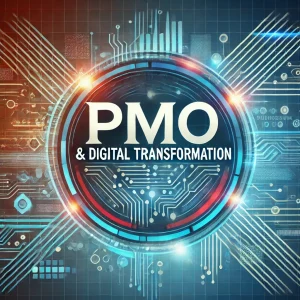 “Imagine a work environment where every interaction feels effortless, and every team member performs at their peak potential.”
“Imagine a work environment where every interaction feels effortless, and every team member performs at their peak potential.”
That’s the dream, right? But often, it feels like pulling teeth when trying to get things done. Why? Because not all team members think, work, or communicate the same way. Understanding personality types, and how to engage with them, is the key to unlocking higher productivity and smoother collaboration.
Why Understanding Personality Types Matters
In tech teams, everyone has their unique way of approaching problems. Some team members are logical thinkers, others are creative, and some prefer to work alone. When these differences aren’t recognised, frustration builds, communication breaks down, and productivity takes a nosedive. The pain point is clear: not understanding your team’s personality types can result in mismanagement and inefficiency.
The Solution: Recognise and Tailor Your Approach
Before you can tailor your engagement style, you need to identify each person’s personality type. Below, we’ll explore how to do this and then discuss how to engage each type effectively.
How to Identify Personality Types
- Observe Working Styles Pay close attention to how your team members approach tasks. Do they thrive on logic and facts? Are they constantly coming up with new ideas? Do they prefer working solo or in a group?
- Analytical types are meticulous and thrive on data.
- Creative innovators tend to be full of ideas, sometimes scattered in their approach.
- Collaborators are always seeking input and enjoy team dynamics.
- Ask the Right Questions You can gain insights by asking subtle questions during meetings or 1-on-1 conversations:
- “How do you prefer to receive feedback, immediately or after some time to reflect?”
- “What type of tasks do you enjoy most, detailed planning or brainstorming sessions?”
- “Do you prefer working alone or in teams?” Their answers can give you clues to their personality types and how they prefer to operate.
- Use Personality Assessment Tools Tools like the Myers-Briggs Type Indicator (MBTI) or DISC assessments are designed to provide a deeper understanding of personality types. These tools can reveal a lot about individual preferences, such as whether someone is an introvert or extrovert, detail-oriented or big-picture focused.
- Pay Attention to Communication Preferences Notice how people communicate:
- Do they write detailed, structured emails? – Suggesting an analytical mind.
- Are they quick to respond with new ideas? – Indicating creativity.
- Do they initiate team discussions and thrive in group settings? – suggesting a collaborative nature)?
Once you’ve identified their personality types, you can engage them in ways that maximise their strengths and improve overall productivity. Let’s dive into the most common types and how to manage them.
Engaging Different Personality Types
The Analytical Thinker (The Data-Driven) Analytical types are logical, detail-oriented, and love diving deep into data. They rely on evidence and facts to make decisions.
How to Engage:
- Present data-driven arguments when discussing ideas.
- Give them time to think through problems rather than expecting instant responses.
- Assign tasks that allow for deep analysis and precision.
The Creative Innovator (The Visionary) These individuals thrive on big ideas, out-of-the-box thinking, and innovation. They’re often the ones coming up with bold solutions but may struggle with practical details.
How to Engage:
- Let them brainstorm freely without being bogged down by constraints initially.
- Pair them with more detail-oriented colleagues to balance creativity with execution.
- Allow space for experimentation but set clear deadlines to avoid endless ideation.
The Natural Leader (The Decision-Maker) Natural leaders tend to take charge and are decisive in their actions. They excel at making quick decisions and moving the team forward.
How to Engage:
- Involve them in strategic discussions and key decision-making processes.
- Give them responsibility but also ensure they understand the importance of collaboration.
- Offer constructive feedback to fine-tune their leadership instincts.
The Collaborator (The Team Player) Team players value harmony, connection, and collective success. They thrive in group settings and excel at bringing people together.
How to Engage:
- Foster a collaborative environment where their efforts to build cohesion are appreciated.
- Make them the glue for cross-functional teams or projects requiring strong interpersonal skills.
- Provide regular feedback and acknowledge their role in enhancing team spirit.
The Independent Worker (The Introverted Specialist) Independent workers prefer working solo and often excel in specific, technical areas. They may struggle with constant interaction but deliver exceptional results when left to focus.
How to Engage:
- Give them space to work independently without micromanagement.
- Set clear expectations and deadlines but limit unnecessary meetings.
- Leverage their strengths by assigning them complex, individual projects that play to their expertise.
The Optimistic Motivator (The Positive Energy) Motivators are high-energy, positive team members who are great at boosting morale and driving momentum. However, they may sometimes overlook details in favour of maintaining a positive atmosphere.
How to Engage:
- Assign them tasks that involve motivating or rallying the team around a common goal.
- Partner them with more detail-oriented colleagues to ensure balance.
- Keep them updated on the team’s progress and milestones, as they thrive on movement and success stories.
By identifying and engaging with different personality types in your team, you can unlock each person’s potential, enhance productivity, and create a more cohesive work environment. Remember, there is no one-size-fits-all approach to management. It’s about recognising and leveraging individual strengths for collective success.

 Ignore the outdated debate about AI replacing humans. The future is not man vs. machine, but rather a powerful collaboration, humans and AI working together to unlock new possibilities. Where AI isn’t seen as a competitor but as the ultimate ally. From helping developers write better code to enhancing customer service interactions in real time, AI is revolutionizing work by amplifying human capabilities. This isn’t just another tech trend, it’s a seismic shift transforming workplaces globally, and those who embrace it are reaping the rewards.
Ignore the outdated debate about AI replacing humans. The future is not man vs. machine, but rather a powerful collaboration, humans and AI working together to unlock new possibilities. Where AI isn’t seen as a competitor but as the ultimate ally. From helping developers write better code to enhancing customer service interactions in real time, AI is revolutionizing work by amplifying human capabilities. This isn’t just another tech trend, it’s a seismic shift transforming workplaces globally, and those who embrace it are reaping the rewards. “If you’re not taking risks, you’re not growing.” We’ve all heard some variation of this phrase, and while it may sound like a cliché, it’s a reality that every successful professional knows all too well. But what does it really mean to take risks in your career? Why is it crucial for your growth, and how do you know which risks are worth taking?
“If you’re not taking risks, you’re not growing.” We’ve all heard some variation of this phrase, and while it may sound like a cliché, it’s a reality that every successful professional knows all too well. But what does it really mean to take risks in your career? Why is it crucial for your growth, and how do you know which risks are worth taking? The tech industry is often hailed as the backbone of modern innovation, propelling society forward with groundbreaking advancements. Yet, behind the sleek interfaces and seamless user experiences lies a silent struggle that too many professionals face: mental health challenges. As the sector continues to grow at an unprecedented rate, it’s time we confront the elephant in the room, mental health in tech.
The tech industry is often hailed as the backbone of modern innovation, propelling society forward with groundbreaking advancements. Yet, behind the sleek interfaces and seamless user experiences lies a silent struggle that too many professionals face: mental health challenges. As the sector continues to grow at an unprecedented rate, it’s time we confront the elephant in the room, mental health in tech. Cast your mind back and try to remember the first time you felt overwhelmed by the complexities of a new technology role, facing a problem you didn’t yet know how to solve. Now imagine having someone experienced, guiding you through, offering advice, and helping you see a way forward. That’s the power of mentorship.
Cast your mind back and try to remember the first time you felt overwhelmed by the complexities of a new technology role, facing a problem you didn’t yet know how to solve. Now imagine having someone experienced, guiding you through, offering advice, and helping you see a way forward. That’s the power of mentorship.

 Great leaders don’t just manage tasks, they inspire, guide, and nurture their teams to grow and succeed. Yet, many leaders still rely on a traditional management style focused on oversight and control. The true power of leadership lies not in managing but in mentoring. Imagine the transformative impact of shifting from being a manager to becoming a mentor, where both sides benefit by fostering talent, driving innovation, and creating an environment where people thrive together.
Great leaders don’t just manage tasks, they inspire, guide, and nurture their teams to grow and succeed. Yet, many leaders still rely on a traditional management style focused on oversight and control. The true power of leadership lies not in managing but in mentoring. Imagine the transformative impact of shifting from being a manager to becoming a mentor, where both sides benefit by fostering talent, driving innovation, and creating an environment where people thrive together. The seamless coordination of IT Service Management (ITSM) and the Project Management Office (PMO) has become a pivotal element in the success of business transformation initiatives. As organizations evolve, ensuring that IT and project teams work efficiently together can be the difference between smooth project execution and operational bottlenecks. But how do you ensure collaboration thrives, particularly when departmental conflicts and resource constraints emerge?
The seamless coordination of IT Service Management (ITSM) and the Project Management Office (PMO) has become a pivotal element in the success of business transformation initiatives. As organizations evolve, ensuring that IT and project teams work efficiently together can be the difference between smooth project execution and operational bottlenecks. But how do you ensure collaboration thrives, particularly when departmental conflicts and resource constraints emerge?